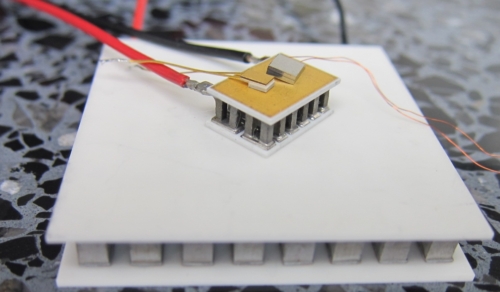Thermoelectric devices
An ideal Thermoelectric Device (TED) is a thermocouple consisting of two branches (called legs) consisting of n-type and p-type semiconducting materials. The two branches are attached to metallic conductors of zero electrical resistance and zero contact resistance. The branches are connected electrically in series and thermally in parallel. It is important to note that heat is transferred only by conduction along the branches of the thermocouple. The efficiency of a thermoelectric device in this ideal case is directly related to the mean ZT values of the materials in the temperature range applied across the TED.
A standard thermoelectric device consists of several hundreds of thermocouples connected in series in order to optimize the performance. In flat devices two ceramic plates with a good thermal conductivity are used at the top and the bottom as an electrical insulation.
Very low electrical and thermal contact resistances are of major importance for a thermoelectric device beside the performance of the thermoelectric materials. Furthermore, the thermo-mechanical stability of the device is of major importance for a long lifetime.


